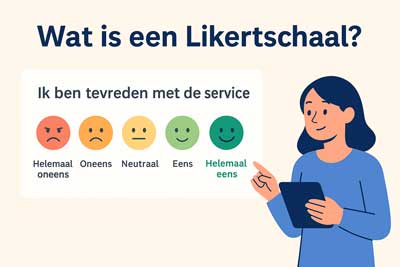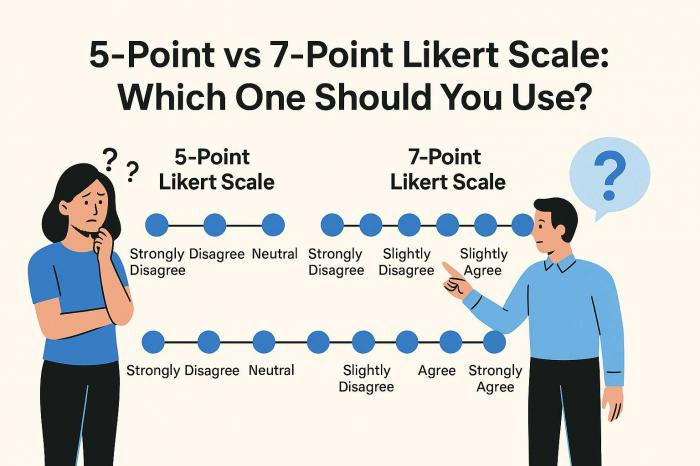Survey vs. Questionnaire: Why the Difference Matters
 Everyone is asking qustions today. Businesses want to know what their customers think. Governments want to understand their citizens. Schools want feedback from students. And almost every day, someone is asking us to “fill out a quick survey.” But here’s something most people don’t realize: not every set of questions is a survey.
Everyone is asking qustions today. Businesses want to know what their customers think. Governments want to understand their citizens. Schools want feedback from students. And almost every day, someone is asking us to “fill out a quick survey.” But here’s something most people don’t realize: not every set of questions is a survey.
In fact, there’s a big difference between a survey and a questionnaire—and mixing them up can lead to bad decisions, wasted time, and misleading results. This article breaks down what each one really means, how they’re used in the real world, and why getting it right matters more than you think.
Difference between surveys and questionnairs
At first glance, surveys and questionnaires may seem like the same thing: a collection of questions posed to people in search of answers. But they are not synonyms.
A questionnaire is the instrument—literally a list of questions. A survey, by contrast, is the full process of gathering and analyzing information. Think of a questionnaire as the script, and the survey as the whole production—from casting the audience to interpreting the final applause.
Surveys involve sampling methods, distribution strategies, statistical validation, and data analysis. Questionnaires, on the other hand, focus only on what is being asked—formatting, language, and structure. When someone says “we did a survey,” but all they mean is “we sent a questionnaire,” they’re confusing the method with the medium.
When to use a questionaire
One one you can know the differences between a questionaire and a survey is the areas they are being used. Here are some of the different areas a questtionnaire is used.
1. Employee Feedback Form
In most modern workplaces, Human Resources (HR) departments regularly distribute questionnaires to employees to assess morale, engagement, and organizational culture. Typically done anonymously, these questionnaires ask about areas like job satisfaction, communication with managers, and feelings of inclusion. The questions are usually closed-ended (e.g., multiple choice or Likert scale), such as:
“How satisfied are you with your current role?”
(Very dissatisfied – Very satisfied)
Real-life example: A mid-sized tech company uses Enquete to send quarterly questionnaires to all departments, but they only review the raw responses without any formal analysis. This is a classic use of a questionnaire, not a full survey.
2. Customer Satisfaction Checklist
Businesses often ask customers to rate their experience right after a transaction, using a short feedback form (usually 3–5 questions). These forms pop up online or arrive via email and are used to monitor service quality.
“Did the representative resolve your issue?” (Yes/No)
“Rate your overall satisfaction.” (1 to 5)
Real-life example: A telecom provider sends automated follow-up forms after a customer call. The data is logged but not always aggregated or segmented. The focus is on gathering opinions, not performing comprehensive research.
3. Product Review Submission
E-commerce sites like Amazon or Etsy offer buyers the option to complete short forms reviewing their purchase. These often include star ratings, short comment boxes, and yes/no questions.
“Was the product as described?” (Yes/No)
“Rate the product’s durability.” (1–5 stars)
Real-life example: A user purchases headphones and receives a prompt asking for feedback via a built-in form. The data is stored but not necessarily analyzed across demographics or time trends. This is a questionnaire without the full weight of a survey methodology.
4. Medical Intake Form
Before your first visit to a doctor, you're usually asked to fill out a form capturing your medical history. These intake questionnaires cover past illnesses, family health history, allergies, and current medications.
“Do you have any known allergies?” (Yes/No)
“Please list all current medications.” (Open-ended)
Real-life example: At a dental clinic, a new patient completes a paper or digital form. The form is reviewed by the dentist or nurse but isn’t analyzed as part of broader health research. It's functional data collection, not analytical research.
5. Course Evaluation Form
At the end of a semester, students are often asked to provide feedback on the instructor, course structure, and materials. These forms may influence future course design or teaching assignments.
“Rate the instructor’s effectiveness.” (1–5)
“What suggestions do you have for improvement?” (Open-ended)
Real-life example: A university gathers anonymous student feedback using Google Forms. Although instructors receive summaries, the forms are typically not statistically analyzed unless part of an institutional study. This is another pure questionnaire usage.
When to use a Survey
1. National Census
This is the most well-known and comprehensive example of a true survey. Governments conduct censuses every 5 or 10 years to gather information about population size, demographics, income, housing, and employment. The data informs policies, funding allocations, and political representation.
Real-life example: The United States Census Bureau mails forms to every household, follows up with non-respondents, and performs rigorous statistical analysis on the collected data. The questionnaire is only one component—sampling, follow-ups, and analysis are integral to the survey process.
2. Political Polling Before Elections
Political surveys use carefully selected samples to gauge public sentiment toward candidates or issues. Unlike random feedback forms, political polls require strict sampling methods to ensure they represent the population.
Real-life example: Organizations like Gallup or Pew Research conduct weekly surveys ahead of elections. They call, email, or text voters, weighting responses to balance age, geography, race, and gender. The findings are used to forecast election results or track policy support.
3. Market Research for a New Product
Companies planning to launch a new product often commission market surveys to understand potential demand, price sensitivity, and target demographics. These are structured research projects, often outsourced to specialized firms.
Real-life example: A beverage company launching a new sparkling water flavor commissions a marketing agency to survey 2,000 participants across six cities. Respondents are chosen based on lifestyle, age, and diet. Results are statistically analyzed to predict market success.
4. Public Health Surveillance
Public health organizations track behaviors like smoking, exercise, and vaccination through nationwide or regional health surveys. These surveys guide funding and awareness campaigns.
Real-life example: The Behavioral Risk Factor Surveillance System (BRFSS) in the U.S. surveys hundreds of thousands of citizens annually to measure health-related risk behaviors. The survey involves random sampling, interviews, and weighted data modeling—far beyond just asking questions.
5. Academic Social Research
Researchers in universities often conduct surveys to test hypotheses in sociology, education, or psychology. These require methodological rigor, peer review, and ethical oversight.
Real-life example: A Ph.D. candidate at a university studies the effects of remote work on work-life balance. They design a survey, get Institutional Review Board (IRB) approval, recruit 500 working professionals, and use SPSS to analyze correlations. This is a textbook example of a real survey.
Why the Difference Matters
This distinction is not just academic—it affects outcomes. If a government agency sends out a poorly structured questionnaire and calls it a “survey,” any resulting policy decisions may rest on weak or biased data. In contrast, a proper survey uses carefully selected samples, validated question sets, and analytical rigor. The U.S. Census is not just a questionnaire mailed to homes; it is a nationwide survey operation costing billions and involving years of planning and analysis.
Moreover, this confusion can dilute public trust. If someone receives a “survey” from a company that simply gathers a few email responses without statistical sampling, they may feel misled. Over time, this erodes the credibility of legitimate research and inflates the weight of unscientific data.
The language effect
Language frames how seriously data is taken. If businesses confuse questionnaires with surveys, they may invest heavily in designing forms but neglect how they distribute them or interpret the data. If journalists treat Twitter polls as surveys, they risk presenting unscientific findings as fact. And if governments don’t distinguish between the two, policies may rest on shallow foundations.
Clarifying the difference isn’t about gatekeeping—it’s about precision. It’s about knowing that asking questions is not the same as conducting research. A questionnaire can gather opinions; a survey seeks to understand them in context.
Conclusion
In an information-saturated world, the quality of the questions we ask—and how we ask them—matters more than ever. By recognizing the difference between surveys and questionnaires, we don’t just improve our vocabulary. We improve our ability to listen, to learn, and to lead.
So next time you’re handed a “survey,” ask yourself: Is this just a set of questions—or is it something more?


